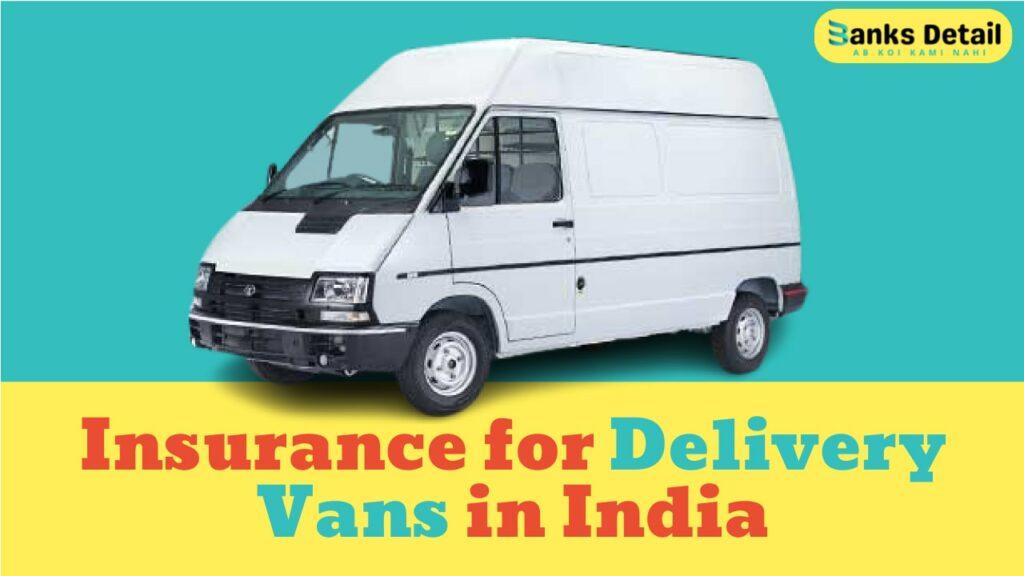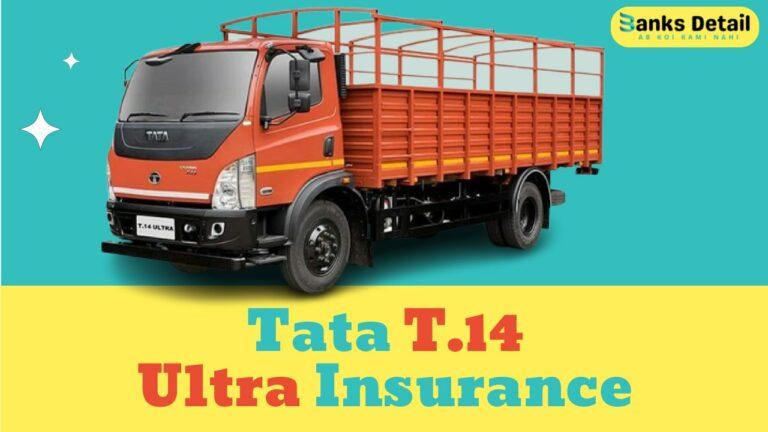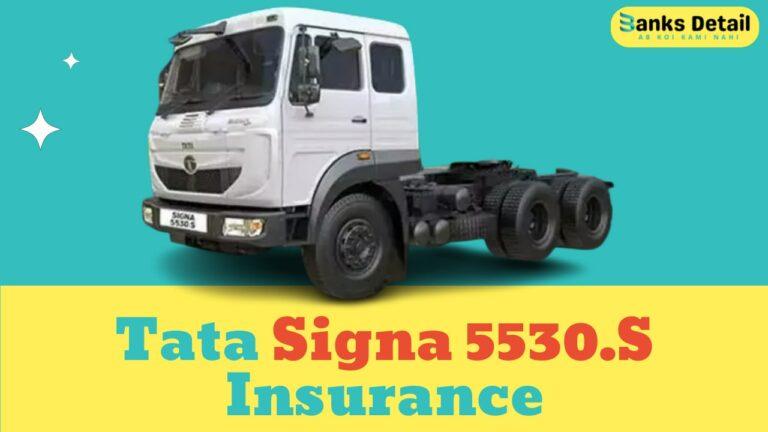Insurance for Delivery Vans in India: Navigating the Roads to Business Security

Introduction
In the ever-expanding landscape of e-commerce in India, the delivery sector has become a critical component. As businesses strive to meet the demands of a growing consumer base, the importance of securing delivery vans with comprehensive insurance cannot be overstated.
The E-commerce Boom and Delivery Landscape in India
India has witnessed a remarkable surge in e-commerce, and with it, the delivery landscape has undergone a transformation. The increased reliance on home deliveries has elevated the importance of an efficient and secure delivery fleet. As businesses embrace this shift, understanding the nuances of delivery van insurance becomes paramount.
Why Delivery Van Insurance is Crucial for Businesses
Delivery van insurance is not just an option; it’s a business necessity. The roads present a myriad of risks, from traffic accidents to unforeseen natural disasters. Without adequate insurance, businesses expose themselves to financial vulnerabilities that can impact their operations and reputation.
Overview of What to Expect in This Guide
This guide aims to demystify the complexities of insurance for delivery vans in India. We will delve into the common risks faced by delivery vehicles, explore the types of insurance coverage available, and provide practical tips for businesses to navigate the insurance landscape effectively.

Understanding the Risks
In the realm of delivery vans, recognizing and comprehending the associated risks is fundamental to creating a robust insurance strategy. This section will delve into the various challenges faced by delivery vehicles and the financial impacts these risks can have on businesses.
Common Risks Faced by Delivery Vans
Traffic Accidents: A Pervasive Challenge
Traffic accidents stand out as a pervasive challenge for delivery vans in India. The congested roads, diverse traffic conditions, and varying skill levels of drivers contribute to an increased likelihood of accidents. Understanding the common scenarios leading to accidents, such as sudden stops or unpredictable road conditions, is crucial for businesses to implement preventive measures.
Safeguarding Against Theft and Vandalism
Theft and vandalism pose significant threats to the security of delivery vans. Whether parked or in transit, these vehicles are susceptible to criminal activities. Employing security measures such as GPS tracking, secure parking facilities, and alarm systems can substantially reduce the risks associated with theft and vandalism.
Preparing for Natural Disasters
Natural disasters add an unpredictable dimension to the risks faced by delivery vans. From floods to earthquakes, being prepared for such eventualities is essential. This involves not only having comprehensive insurance coverage but also developing contingency plans to ensure the safety of drivers and the timely delivery of goods.
Financial Impacts of Risks on Businesses
The financial implications of these risks can be severe. Repairing or replacing damaged vehicles, compensating for stolen goods, and addressing the aftermath of accidents can strain a business’s finances. This underscores the need for a well-crafted insurance policy that not only protects against these risks but also ensures a swift recovery in case of an unfortunate event.
Understanding these risks lays the foundation for selecting the appropriate insurance coverage. In the next section, we’ll explore the types of insurance coverage available for delivery vans in India.
Types of Insurance Coverage
As businesses navigate the intricate web of risks associated with delivery vans, choosing the right insurance coverage becomes a pivotal decision. This section will provide a detailed exploration of the types of insurance options available, offering insights into third-party insurance, comprehensive coverage, and personal accident insurance.
Third-Party Insurance: Meeting Legal Requirements
Understanding Third-Party Coverage
Third-party insurance is a legal mandate for all vehicles in India, and delivery vans are no exception. This coverage protects businesses from financial liabilities arising from injuries or damages caused to third parties. Understanding the nuances of third-party coverage ensures businesses comply with legal requirements while safeguarding their financial interests.
Legal Mandates for Delivery Vans
Delivery van operators must be well-versed in the legal mandates associated with insurance coverage. This includes maintaining the requisite third-party coverage, adhering to documentation requirements, and ensuring timely renewals. Non-compliance can result in legal repercussions and financial liabilities.
Comprehensive Insurance: Beyond Basic Coverage
Safeguarding the Van Against Damages
Comprehensive insurance offers a broader scope of protection compared to third-party coverage. It covers damages to the insured van, including those resulting from accidents, theft, vandalism, and natural disasters. This type of coverage is essential for businesses seeking comprehensive financial protection.
Unpacking Inclusions and Exclusions
It’s crucial for businesses to thoroughly understand the inclusions and exclusions of their comprehensive insurance policy. While comprehensive coverage is expansive, certain events or circumstances may be excluded. This section will delve into common inclusions and exclusions, empowering businesses to make informed decisions.
Personal Accident Insurance: Protecting Drivers and Staff
The Significance of Personal Accident Coverage
The well-being of drivers and staff is a priority for businesses operating delivery vans. Personal accident insurance provides coverage for injuries, disabilities, and fatalities suffered by drivers and staff during their duties. This section will underscore the significance of this coverage and its role in ensuring the welfare of the workforce.
Understanding the nuances of these insurance options equips businesses with the knowledge needed to tailor a comprehensive insurance strategy. In the following section, we’ll explore the factors influencing insurance premiums for delivery vans.
Factors Affecting Premiums
The cost of insurance premiums is a critical consideration for businesses managing delivery vans. This section will delve into the various factors that influence insurance premiums, offering insights into how vehicle specifications, geographical locations, driver records, and safety measures play a pivotal role in determining the cost of coverage.
Vehicle Specifications and Age
The specifications and age of a delivery van significantly impact insurance premiums. Newer vehicles with advanced safety features may qualify for discounts, while older vans might incur higher costs due to increased maintenance risks. Businesses must strike a balance between the initial cost of the vehicle and the long-term savings achievable through lower insurance premiums.
Geographical Location and Routes
The geographical location of operations and the routes taken by delivery vans are crucial considerations for insurers. Areas with higher traffic congestion or a history of accidents may result in elevated premiums. Conversely, businesses strategically operating in low-risk zones can negotiate more favorable insurance rates.
Driver’s Record and Experience
The driving record and experience of individuals operating delivery vans are integral factors affecting insurance premiums. Businesses employing drivers with clean records and extensive experience may qualify for lower premiums. Conversely, inexperienced drivers or those with a history of accidents may contribute to higher insurance costs.
Enhancing Safety Measures and Security Systems
Implementing robust safety measures and security systems in delivery vans can have a direct impact on insurance premiums. Insurers often provide discounts for vehicles equipped with advanced safety features, GPS tracking systems, and secure parking arrangements. This section will provide a comprehensive guide to enhancing safety measures to optimize insurance costs.
Understanding how these factors interplay is crucial for businesses aiming to strike a balance between cost-effective insurance and comprehensive coverage. In the next section, we’ll navigate through the government regulations surrounding delivery van insurance in India.
Government Regulations and Compliance
Navigating the regulatory landscape is paramount for businesses operating delivery vans in India. This section will provide a comprehensive overview of the regulatory requirements, the consequences of non-compliance, and strategies for adapting to changes in regulations.
Overview of Regulatory Requirements
Understanding the regulatory requirements for delivery van insurance is foundational for compliance. This includes obtaining mandatory third-party coverage, maintaining up-to-date documentation, and adhering to renewal deadlines. Non-compliance with these regulations can lead to legal penalties and financial repercussions.
Consequences of Non-Compliance
Non-compliance with government regulations can have severe consequences for businesses. Fines, legal actions, and even the suspension of operations are potential outcomes. This section will delve into real-world case studies and examples to underscore the importance of adhering to regulatory requirements.
Adapting to Changes in Regulations
Government regulations pertaining to delivery van insurance can evolve over time. Staying abreast of these changes is crucial for businesses to ensure ongoing compliance. This section will provide practical tips and strategies for adapting to changes in regulations, emphasizing the proactive approach businesses should adopt.
By understanding and proactively addressing government regulations, businesses can not only avoid legal entanglements but also streamline their operations for long-term success. In the following section, we’ll explore best practices for choosing insurance, from researching reputable providers to comparing coverage options.
Best Practices for Choosing Insurance
Choosing the right insurance is a pivotal decision that requires careful consideration. In this section, we’ll explore best practices for businesses seeking delivery van insurance, covering aspects such as researching reputable providers, comparing quotes and coverage options, and leveraging customer reviews and testimonials.
Researching Reputable Insurance Providers
Choosing a reliable insurance provider is the cornerstone of a robust insurance strategy. This section will guide businesses through the process of researching reputable insurance providers. Factors such as the provider’s track record, customer service, and financial stability will be explored to empower businesses in making informed choices.
Comparing Quotes and Coverage Options
The process of choosing insurance involves more than just selecting the first available option. Businesses must engage in a meticulous process of comparing quotes and coverage options. This section will provide a step-by-step guide, including the importance of obtaining multiple quotes, understanding coverage terms, and evaluating deductibles.
Leveraging Customer Reviews and Testimonials
The experiences of other businesses with a particular insurance provider can offer invaluable insights. By leveraging customer reviews and testimonials, businesses can gain a realistic understanding of the provider’s strengths and weaknesses. This section will provide tips on effectively analyzing customer feedback to inform decision-making.
Navigating the selection process with these best practices ensures that businesses not only meet their immediate insurance needs but also establish long-term relationships with reliable providers. In the following section, we’ll delve into real-life case studies, exploring success stories and lessons learned from unfortunate incidents related to delivery van insurance.
Case Studies: Real-Life Examples
Real-life case studies provide valuable insights into the tangible impact of insurance choices on businesses operating delivery vans. In this section, we’ll explore success stories where insurance played a pivotal role in saving businesses, lessons learned from unfortunate incidents, and the overarching role of proper insurance planning in mitigating risks.
Success Stories of Insurance Saving Businesses
Case Study 1: “Resilience in the Face of Adversity”
In this case study, we’ll delve into a scenario where a well-structured insurance plan helped a business overcome unexpected challenges, highlighting the importance of proactive risk management.
Case Study 2: “Navigating the Unexpected Turns”
Explore a success story where the right insurance coverage not only protected assets but also facilitated business continuity during unforeseen circumstances.
Lessons Learned from Unfortunate Incidents
Case Study 3: “Mitigating Losses Through Adequate Coverage”
Examining a case where insufficient insurance coverage resulted in significant losses, this study emphasizes the consequences of overlooking key aspects in insurance planning.
Case Study 4: “The Ripple Effect of Underinsured Operations”
Learn from a business’s experience with underinsurance and the cascading effects it had on their overall operations, shedding light on the importance of comprehensive coverage.
The Role of Proper Insurance Planning in Mitigating Risks
Case Study 5: “Strategic Insurance Planning for Long-Term Success”
This case study will showcase how businesses strategically planning their insurance portfolios not only address immediate risks but also position themselves for long-term success and resilience.
Real-life examples provide tangible evidence of the impact insurance decisions can have on the trajectory of a business. In the subsequent section, we’ll explore tips for filing claims, detailing the immediate steps to take after an incident, documenting damages and losses, and navigating the claims process with insurance providers.
Tips for Filing Claims
Filing insurance claims effectively is paramount for businesses seeking timely recovery from unexpected incidents. This section will provide comprehensive tips on the immediate steps to take after an incident, documenting damages and losses, and navigating the claims process with insurance providers.
Immediate Steps After an Incident
1. Ensure Safety First:
- Prioritize the safety of drivers, passengers, and anyone involved in the incident.
- Take necessary measures to prevent further harm or damage.
2. Gather Information:
- Collect relevant details, including the names and contact information of parties involved, witness accounts, and photos of the scene.
3. Notify Authorities:
- Report the incident to the local authorities, ensuring that a formal record is created.
4. Contact Insurance Provider:
- Inform the insurance provider promptly, providing preliminary details of the incident.
Documenting Damages and Losses
1. Thoroughly Assess Damages:
- Conduct a comprehensive assessment of damages to the delivery van, goods, and any other affected property.
2. Document with Visuals:
- Capture photographs or videos of damages from various angles, providing a visual record for the insurance claim.
3. Retain Supporting Documents:
- Keep all relevant documents, such as repair estimates, invoices, and receipts, meticulously organized for submission.
4. Compile Incident Report:
- Prepare a detailed incident report outlining the sequence of events, damages incurred, and any immediate actions taken.
Navigating the Claims Process with Insurance Providers
1. Prompt Submission:
- Submit all required documents and information promptly to expedite the claims process.
2. Communicate Clearly:
- Maintain clear and open communication with the insurance provider, promptly responding to any additional requests for information.
3. Follow-Up Regularly:
- Regularly follow up on the status of the claim, ensuring that it is being processed in a timely manner.
4. Understand Policy Terms:
- Familiarize yourself with the terms of your insurance policy to ensure that the claim aligns with the coverage.
Conclusion
Effective claim filing is a crucial aspect of realizing the benefits of insurance. By following these tips, businesses can streamline the claims process, facilitating a swift recovery from incidents and minimizing disruptions to their operations.
In the subsequent section, we’ll explore emerging trends in delivery van insurance, including the utilization of telematics for advanced risk assessment, technological advances in claims processing, and the impact of electric and autonomous vehicles on insurance.
Emerging Trends in Delivery Van Insurance
The landscape of delivery van insurance is evolving rapidly, influenced by technological advancements and shifts in the transportation industry. In this section, we’ll explore emerging trends that businesses should be aware of, including the utilization of telematics for advanced risk assessment, technological advances in claims processing, and the impact of electric and autonomous vehicles on insurance.
Telematics for Advanced Risk Assessment
1. Integration of Telematics Devices:
- The integration of telematics devices in delivery vans allows for real-time monitoring of vehicle performance, driver behavior, and environmental conditions.
2. Advanced Risk Profiling:
- Telematics enables insurers to create advanced risk profiles, considering factors such as driver habits, route efficiency, and adherence to safety protocols.
3. Customized Premiums:
- Businesses adopting telematics may benefit from customized premium structures, where safer driving practices result in lower insurance costs.
Technological Advances in Claims Processing
1. Digital Documentation and Processing:
- The shift towards digital documentation and processing expedites the claims process, reducing paperwork and enhancing efficiency.
2. Blockchain for Transparency:
- The incorporation of blockchain technology enhances transparency in claims processing, providing a secure and immutable record of transactions.
3. AI-Powered Claim Assessments:
- Artificial Intelligence (AI) plays a role in automated claim assessments, improving accuracy and speeding up the evaluation of damages.
The Impact of Electric and Autonomous Vehicles on Insurance
1. Rise of Electric Vehicles (EVs):
- The increasing adoption of electric delivery vans introduces new considerations for insurers, including specialized coverage for EV components and charging infrastructure.
2. Autonomous Vehicles and Liability Shifts:
- As autonomous delivery vehicles become more prevalent, the landscape of liability may shift from driver-related incidents to technology-related issues, impacting insurance structures.
3. Insurance for Technology Integration:
- Insurers are exploring coverage options specific to the integration of autonomous technologies, including liability protection for software malfunctions or system errors.
Conclusion
Staying abreast of these emerging trends is essential for businesses aiming to optimize their delivery van insurance strategies. Telematics, technological advances, and the advent of electric and autonomous vehicles are reshaping the insurance landscape, presenting both challenges and opportunities.
In the next section, we’ll address frequently asked questions (FAQs) related to delivery van insurance, covering legal requirements, insuring multiple vans under a single policy, understanding the claims process, and specific insurance options for transporting perishable goods.
Frequently Asked Questions (FAQs)
Navigating the intricacies of delivery van insurance often gives rise to common questions. In this section, we’ll address frequently asked questions related to legal requirements, insuring multiple vans under a single policy, understanding the claims process, and specific insurance options for transporting perishable goods.
Legal Requirements for Delivery Van Insurance
What are the legal requirements for delivery van insurance in India?
In India, it is mandatory for all vehicles, including delivery vans, to have third-party insurance. This coverage protects against liabilities arising from injuries or damages caused to third parties. Non-compliance with this requirement can lead to legal consequences.
Insuring Multiple Vans Under a Single Policy
Can I insure multiple delivery vans under a single insurance policy?
Yes, many insurance providers offer fleet insurance options, allowing businesses to insure multiple delivery vans under a single policy. This simplifies administration and may offer cost benefits compared to individual policies.
Understanding the Claims Process
What steps should I take after an incident to initiate the claims process?
After an incident, ensure safety first, gather relevant information, notify authorities, and contact your insurance provider promptly. Provide necessary details, document damages with visuals, retain supporting documents and follow up regularly to expedite the claims process.
Specific Insurance Options for Perishable Goods Transport
Are there specific insurance options for transporting perishable goods?
Yes, businesses involved in transporting perishable goods should explore specialized coverage such as “reefer truck insurance.” This coverage is designed to protect against losses associated with temperature-sensitive cargo, ensuring financial safeguards for perishable shipments.
Final Conclusion
In this comprehensive guide, we’ve navigated the intricate landscape of delivery van insurance in India. From understanding the risks and types of coverage to exploring government regulations, best practices for choosing insurance, and emerging trends, businesses now possess a roadmap for informed decision-making.
As the insurance industry continues to evolve, staying updated on trends, embracing technological advancements, and prioritizing proactive risk management will be key for businesses aiming not only to meet legal requirements but to foster long-term resilience and success.
In conclusion, prioritizing delivery van insurance is not just a legal requirement but a strategic investment in the longevity and resilience of your business. Whether mitigating risks, filing claims, or adapting to emerging trends, a well-informed approach ensures that businesses navigate the roads to success securely.
Thank you for entrusting us with your journey through the world of delivery van insurance. Safe travels and successful ventures ahead!
Read More About:- Insurance, Commercial Vehicle Insurance, Pickup Insurance





